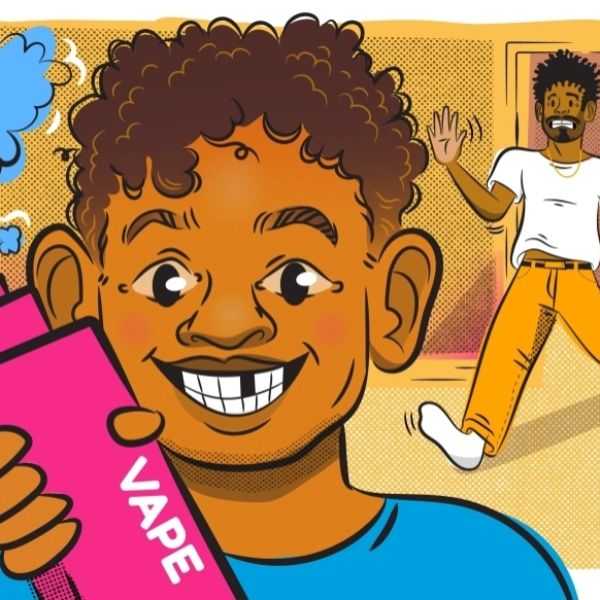Vape Effects on Children: Unveiling the Hidden Dangers
Nowadays, when walking on the street, it is common to see some smokers holding colorful vape pens, puffing clouds into the air. Instead of the “stinky smell of cigarettes,” a faint pleasant fragrance emanates from them as they pass by—even scents of various fruits like strawberries and blueberries can be smelled.In recent years, the popularity of vapes has surged, with their seemingly harmless and pleasant scents luring in users. However, beneath the appealing aroma lies a concerning issue: the impact of vapes on children. Despite their seemingly innocuous allure, vapes pose significant risks to children’s health and well – being, making it crucial to understand the potential dangers and take necessary precautions.
The Illusion of Safety Created by Pleasant Scents
One of the most deceptive aspects of vapes is their pleasant scents. Vapes often emit a variety of alluring fragrances, from sweet vanilla to refreshing mint, which can create an illusion of safety and harmlessness. Many people, including parents, may mistakenly believe that because vapes smell nice, they are not harmful, especially to children.

Iterations of e-cigarettes
In reality, these pleasant scents are the result of various flavoring chemicals added to vape liquids. When heated and vaporized, these chemicals can produce a complex mixture of substances, some of which are known to be harmful. For example, certain flavorings may release potentially toxic compounds such as formaldehyde and acetaldehyde when vaporized. Children, with their developing bodies and still – maturing immune systems, are particularly vulnerable to these substances. Even brief exposure to the scented vapor can irritate their respiratory tracts, causing coughing, wheezing, and other respiratory problems. Over time, repeated exposure may lead to more serious long – term health issues, including an increased risk of developing chronic respiratory diseases and even cancer.
The Tempting Trap of Flavored Vapes for Children
Flavored vapes, especially those with fruity flavors, have become a significant concern when it comes to children. These vapes are often designed to mimic the taste of popular fruits like strawberries, blueberries, and mangoes, which are extremely appealing to children due to their natural fondness for sweet and fruity tastes.
The colorful packaging and enticing flavors of these vapes act as powerful magnets, drawing children in and piquing their curiosity. Children, with their limited understanding of the risks associated with vaping, may be easily tempted to try these devices. Once they start experimenting with vapes, they are at risk of becoming addicted to nicotine, which is commonly found in most vape liquids. Nicotine addiction can have a profound impact on a child’s developing brain, affecting cognitive functions such as attention, memory, and learning ability. It can also lead to mood swings, anxiety, and other behavioral problems, disrupting a child’s normal development and well – being.
Moreover, the normalization of vaping, especially flavored vaping, in popular culture and social media further exacerbates the problem. Children are constantly exposed to images and messages that make vaping seem cool and trendy, increasing the likelihood of them succumbing to the temptation of flavored vapes.
Adverse Effects of Vape on Children
Childhood is a critical period for human growth and brain development, so compared to the harm of vapes to adults, children need more attention. Their brains are in a highly plastic state, and stimulation from external factors—such as nicotine in vapes—can interfere with neural network development, potentially causing long-term neurological and psychological disorders. This article systematically summarizes six major hazards of vapes on children, exploring how these devices affect their physical health, cognitive development, and emotional stability during this vulnerable developmental stage.
➡ Adolescents are more sensitive to the reward effects of nicotine and may form dependence more quickly.
➡ The brain (especially the prefrontal cortex) is still developing, and nicotine exposure may lead to attention deficits, impaired working memory, and executive function disorders.
➡ E – cigarette use is associated with depressive symptoms, anxiety, perceived stress, and suicide – related behaviors.
➡ There is a higher risk of bronchial asthma, pneumonia, bronchitis, and chronic cough, which may affect lung function development.
➡ E – cigarette use is linked to insufficient sleep and poorer academic performance, especially poor school grades.
➡ It increases the likelihood of smoking traditional cigarettes in the future.

The effects of vapes on children are far from negligible. The seemingly harmless pleasant scents and alluring flavors of vapes mask a multitude of potential health risks that can have a lasting impact on a child’s physical and mental development. As parents, educators, and society as a whole, it is our responsibility to raise awareness about these dangers and take proactive steps to protect children from the allure of vapes.
This includes educating children about the risks associated with vaping from an early age, setting clear boundaries and rules regarding vape use in the household, and advocating for stricter regulations on the marketing and sale of flavored vapes. By doing so, we can help safeguard the health and future of the next generation, ensuring that they grow up free from the harmful effects of vapes.

